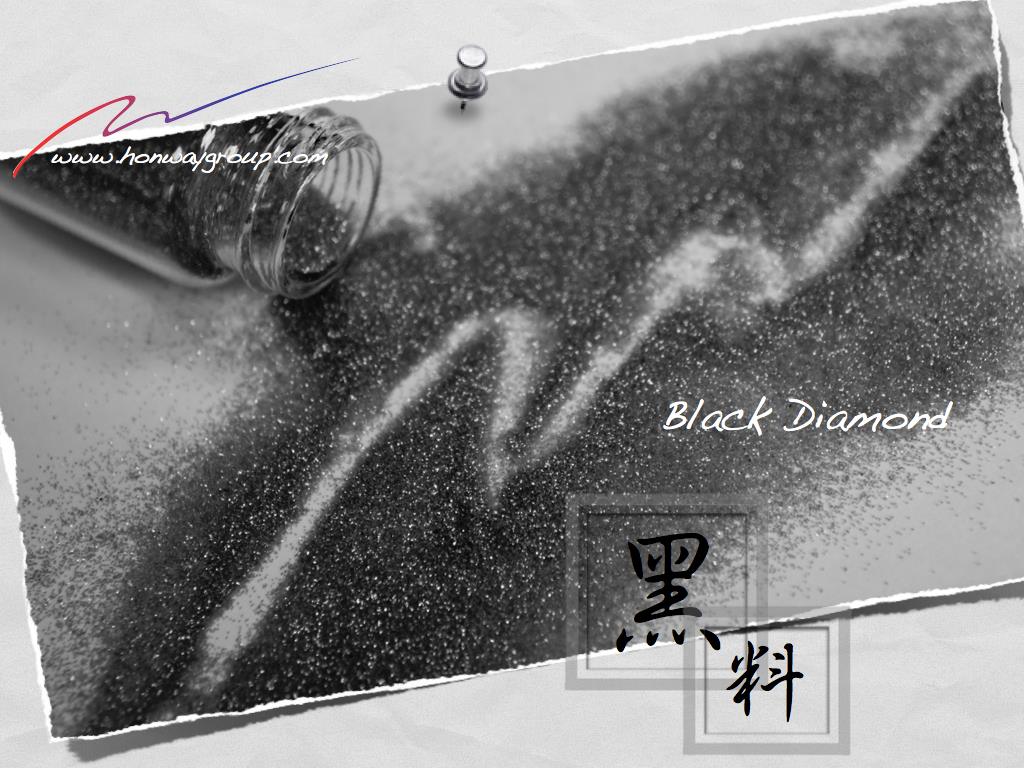In the semiconductor industry, the pursuit of “high precision” never stops. From early micron-level processes to current 3nm and 2nm advanced nodes, chip designs are becoming increasingly complex and structures are shrinking. Consequently, the demands on every aspect of the process are also rising, especially wafer surface flatness and defect control, which are critical for determining finished product yield and reliability.
Traditionally, grinding and polishing consumables were often considered auxiliary tools, assisting in Chemical Mechanical Planarization (CMP) and other related process steps. However, in today’s era, where “atomic-level precision” is the goal, these consumables are no longer mere auxiliary roles. They are now core drivers that enhance process quality and support the advancement of technology nodes. The innovation and performance of consumables profoundly impact the success or failure of every square inch in the wafer fabrication process.
Table of Contents
Precision Specifications for Wafer Surface Roughness
In the era moving towards 3nm and 2nm process nodes, wafer surface roughness has become one of the key factors for process success, with its standards already approaching atomic scale:
| Process stage | Average surface roughness (Ra) Specifications |
| After polishing wafer (bare silicon) | ≤ 0.2 ~ 0.5 nm |
| Oxide/nitride surface | ≤ 0.3 ~ 0.8 nm |
| High dielectric material films (such as HfO₂) | ≤ 0.2 ~ 0.4 nm |
| Multi-layer stacked structure interface (GAA, etc.) | ≤ 0.1 ~ 0.3 nm |
| Metal layer (such as copper, cobalt) surface | ≤ 0.5 ~ 1.0 nm |
How to Improve Precision? The Extreme Demands of Semiconductor Processes on Consumables

The definition of “precision” in semiconductor manufacturing has far surpassed the concept of traditional machining. In advanced processes, “high precision” is no longer just micron-level error control but is approaching nanometer, or even picometer, levels. This poses four major challenges and technical hurdles for grinding and polishing consumables:
1. Ultra-Low Surface Roughness
The wafer surface must achieve atomic-level flatness; otherwise, subsequent processes such as photolithography, deposition, and etching will not be able to align precisely or deposit uniformly. For example, the average surface roughness (Ra) after high-end wafer polishing needs to be controlled below 0.5 nm, with even further requirements for 0.2 nm interface smoothness. Traditional mechanical methods struggle to meet this standard, thus relying on precise Chemical Mechanical Planarization combined with advanced consumables.
2. Ultra-Low Defectivity
The most common defects in the process include scratches, particles, residues, and pits. Even tiny flaws can lead to electrical abnormalities or short circuits, severely impacting chip yield. According to current inspection technologies (such as SEM, AFM, Raman spectroscopy, etc.), a single sub-micrometer particle can cause irreversible damage to a 3nm process. The purity, dispersion stability, and chemical properties control of consumables directly influence whether new defects will be introduced in practical applications.
3. Excellent Thickness Uniformity
On multi-layered stacked wafers, polishing each layer requires controlling the material removal rate to maintain uniform film thickness across the entire wafer. For instance, in CMP on a wafer coated with 7 nm aluminum oxide, in addition to requiring a removal thickness error of less than 1 nm, interface roughness is even required to be as low as 0.2 nm. This places extremely high demands on the uniform distribution and mechanical structural design of consumables.
4. High Selectivity
Advanced processes often involve multi-layered structures of heterogeneous materials, such as Inner Spacer and Etch Back steps in Gate-All-Around (GAA) architecture, which require precise removal of specific materials without damaging adjacent layers. This demands that consumables not only be “gentle” enough but also “material-aware,” possessing good material-selective removal capabilities.
Against this backdrop, the expectations for grinding and polishing consumables on the market have long evolved from “usable” to “capable of precisely executing specified functions and stably controlling process variations.”
Process Inspection Technologies

To ensure that consumables meet the extreme requirements mentioned above, the modern semiconductor industry utilizes advanced inspection technologies to examine wafer quality from multiple angles. These include:
- Non-patterned Defect Inspection: To assess surface roughness, particle contamination, film non-uniformity, micro-cracks, etc.
- Patterned Defect Inspection: To identify pattern deviations, etching defects, residues, etc.
- Raman Spectroscopy Analysis: To analyze material structure, stress, and contamination.
- Nanoprobe (AFM/STM) Technology: To provide atomic-level surface morphology information.
- X-ray Reflectivity (XRR) Technology: For non-destructive measurement of ultra-thin film thickness and interface roughness.
These inspection methods further raise the bar for consumable R&D and quality control, compelling suppliers to respond to market demands with innovative materials and precise processes.
Facing these unprecedented process challenges, Honway’s grinding and polishing consumable product line is precisely tailored for “higher precision.” Whether in wafer rough grinding, fine grinding, CMP polishing, or dresser applications, Honway invests heavily in R&D, optimizing material structures and process formulations to help customers achieve stable, high-yield results in high-end processes.
Honway Polishing Slurry Series
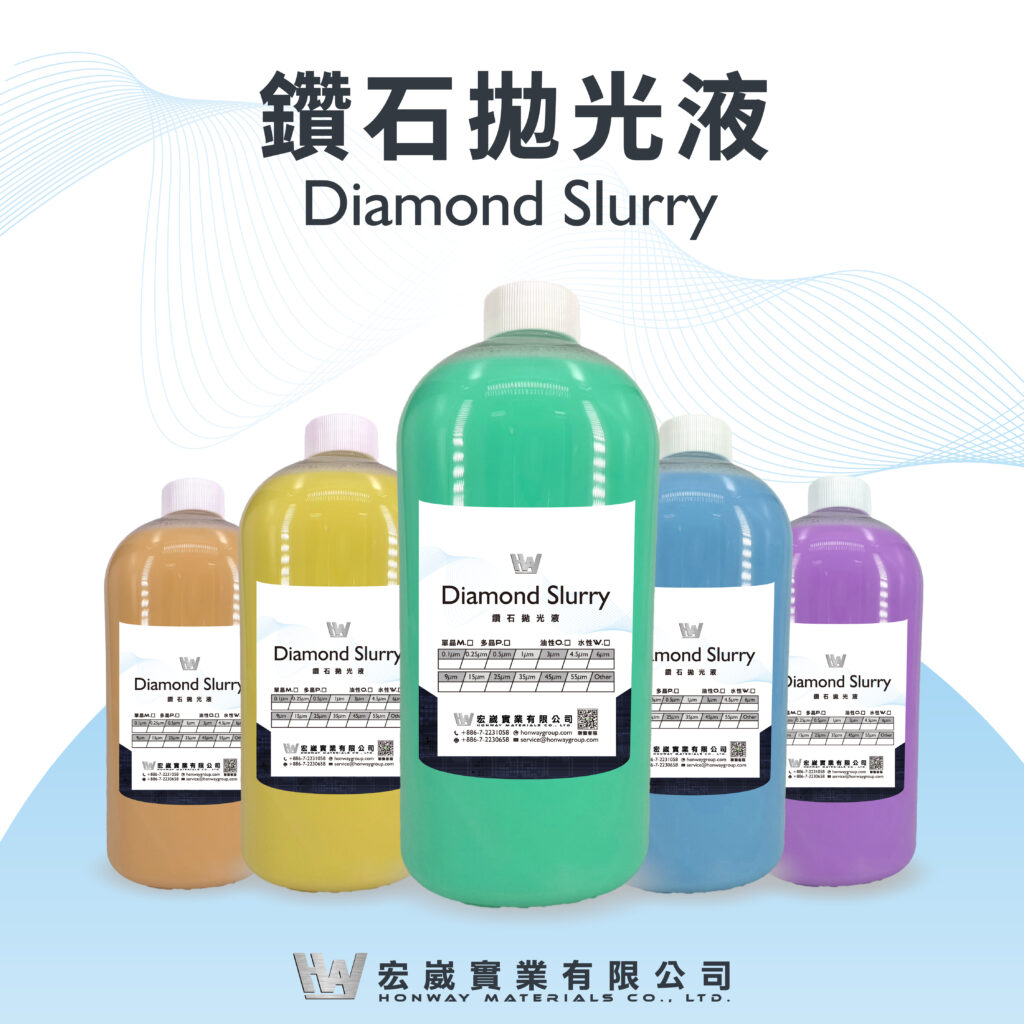
Honway’s polishing liquids utilize advanced nano-scale particle technology, offering various material-specific formulations and particle size options to achieve ultimate results for different surface characteristics:
| Item | STI, low-k dielectric layer | Silicon (Si) | Silicon Carbide (SiC) |
| Grinding Consumables | Cerium Oxide | Alumina, Silica Grinding Slurry/Powder | Diamond grinding slurry/paste |
| Grinding time | 20~30 minutes | 60~120 minutes | |
| Loss rate | <1% | ≧5~10% |
- Honway Diamond Polishing Slurry: Employs high-purity diamond micro-particles, with particle sizes controllable to ≤50 nm. It provides comprehensive support from rough grinding to mirror-finish polishing, especially suitable for surface treatment of ultra-hard materials like SiC and GaN, achieving ultra-low surface roughness of Ra ≤ 0.01 µm (10 nm), significantly enhancing power component yield and heat dissipation efficiency.
- Honway Aluminum Oxide Polishing Slurry: Designed for silicon, metal layers (such as copper, tungsten), and dielectric layer materials, combining excellent material removal rate with surface quality to ensure high-yield multi-layer stacking processes.
- Honway Cerium Oxide Polishing Slurry: Primarily used for STI (Shallow Trench Isolation) and dielectric layer planarization, featuring high selectivity and low defectivity, capable of precisely removing specified layers without damaging adjacent structures.
- Honway Silicon Dioxide Polishing Liquid: Widely applied for fine polishing of dielectric layers and silicon wafers, providing stable removal rates and excellent flatness control, offering ideal solutions for high-end logic chip and memory processes.
These diverse abrasive choices allow Honway to precisely match based on material properties. Whether it’s rigid silicon, complex metals, or brittle oxides, the most suitable grinding solution can be found.
Honway Polishing Liquid Features:
- High Stability: Not prone to sedimentation or crystallization over long periods of use, reducing process abnormality risks.
- Low Toxicity, Easy Disposal: Environmentally friendly formula design, easily disposable waste liquid, conforming to green manufacturing trends.
- Anti-Contamination Capability: Effectively reduces the risk of residues, bubbles, and secondary particle contamination, ensuring defectivity is controlled to a minimum.
- Easy-to-Clean Formula: We deeply understand the importance of cleaning and workpiece protection, thus specifically designed for easy cleaning.
From FinFET processes to GAA (Gate-All-Around) architecture, the demands on polishing liquids are becoming more complex. The Honway team provides customized parameter adjustments, tailoring optimal solutions for different materials (e.g., Si, SiC, GaN, oxides, etc.) and process conditions (removal rate, selectivity, defect control, roughness standards).
Honway Polishing Pad Series
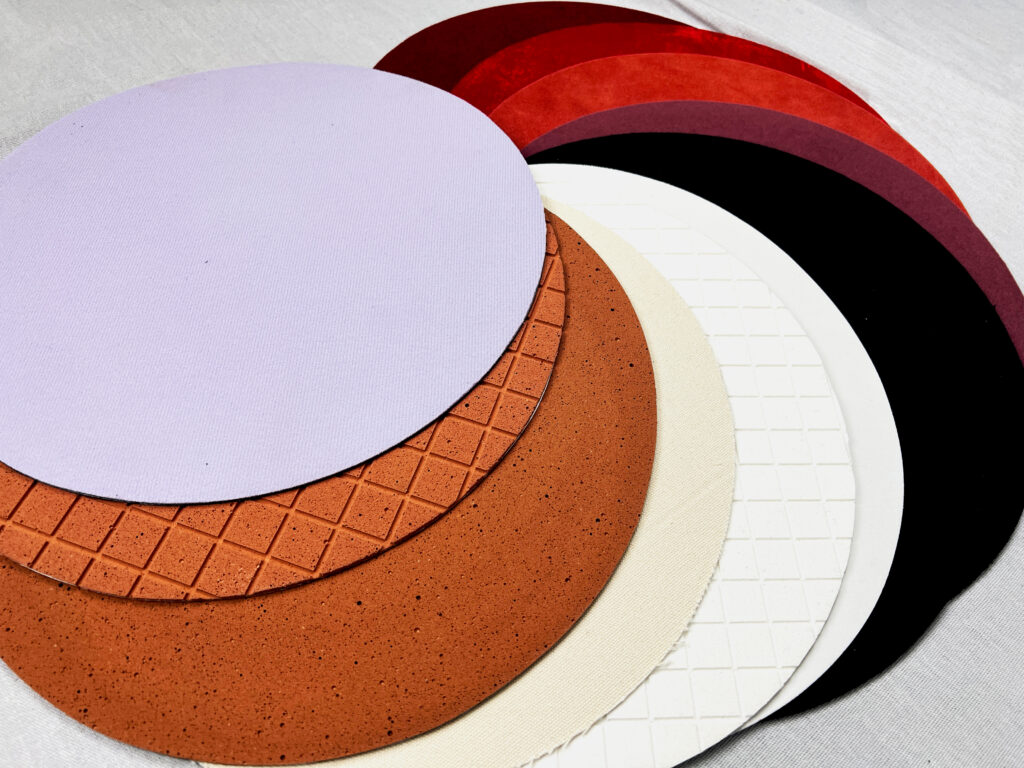
As advanced semiconductor processes impose increasingly stringent requirements on surface quality, polishing pads, as critical consumables in the Chemical Mechanical Planarization (CMP) process, directly impact wafer surface roughness, material removal rate, and overall process stability. Honway’s precisely developed high-performance wafer grinding and polishing pads, combining innovative materials science with microstructure design, provide the industry with more efficient and cost-effective CMP solutions.
- Materials Science Breakthrough – Five-Layer Structure Achieves Functional Integration: Honway polishing pads feature a unique five-layer composite structure design. Compared to traditional single-layer or three-layer polishing pads, this design not only enhances mechanical strength and deformation control capabilities but also provides precise support and interface response for different process stages. Each layer has a clear division of labor, from rigid control of the carrier substrate, to elastic modulus and friction coefficient adjustment of the contact layer, and dynamic pressure adjustment capability of the surface layer. Each layer is precisely designed and material-optimized to ensure high matching with different types of polishing slurries (e.g., SiO₂, CeO₂, Al₂O₃, diamond, etc.), improving removal rate and surface uniformity.
- Microstructure Design – Smoother Slurry Flow and Bubble Release: Honway polishing pad surfaces are highly engineered with a high-density microporous structure and optimized groove patterns. This ensures uniform distribution of grinding fluid during polishing, preventing localized accumulation and dry friction, and effectively guiding bubble expulsion, reducing the risk of micro-scratches and surface defects.
- Long Lifespan and Process Stability: Honway polishing pads possess excellent wear resistance and shape retention. Even under long-term high-load conditions, they can maintain stable pressure distribution and grinding effect, significantly extending the pad’s service life. The extended replacement cycle not only reduces material costs but also minimizes downtime frequency and process variation risks, enhancing overall production line utilization and yield performance.
Honway Precision Grinding Wheel Series
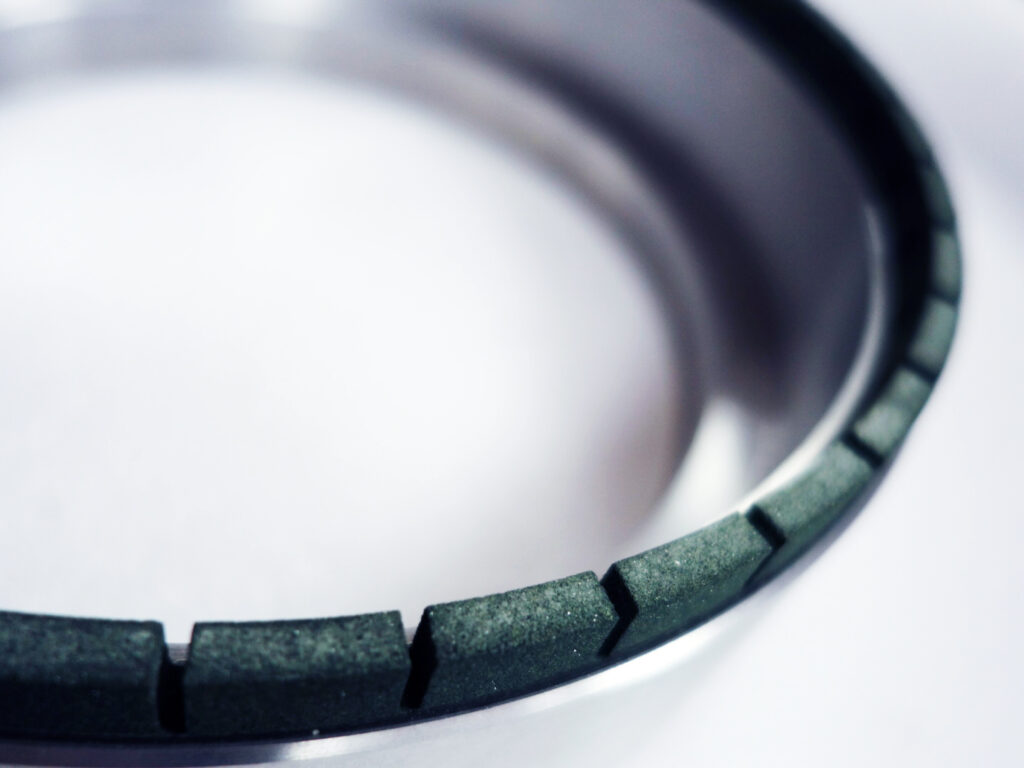
To meet the strict requirements for roughness and surface quality at different stages of wafer processing, Honway offers a series of professional grinding wheels tailored to specific materials and applications:
- Chamfering and Grinding Wheels for Silicon Wafers
Used for wafer edge chamfering, effectively removing burrs and micro-cracks after cutting, ensuring smooth and damage-free edges, reducing the risk of wafer chipping due to micro-cracks in subsequent processes, and improving overall yield. - Grinding Wheels for Wafer Surface Grinding
Applied for silicon wafer surface planarization, Honway grinding wheels achieve an ideal balance of high removal rate and low surface roughness, helping wafers attain high flatness (TTV, WARP control) and low Ra values, which is an indispensable foundation for advanced packaging and high-end processes. - Grinding Wheels for Compound Semiconductors
In response to the increasingly widespread application of ultra-hard and brittle compound semiconductor materials like SiC and GaN, Honway has developed specialized high-hardness, high-wear-resistance grinding wheel formulations that can effectively achieve fast rough grinding while reducing surface micro-cracks and material damage, supporting the high-yield processing needs of power components and RF components.
Honway Diamond Disk Consultation:
- Introduction: As a “conditioner” for grinding/polishing pads, the diamond disk, through its high hardness, precisely conditions the grinding/polishing pad surface, ensuring its flatness and cutting performance, maintaining optimal cutting performance to sustain the flatness and rate during wafer polishing, and improving yield.
- Services Provided: If you wish to learn more detailed information, please contact Honway. Honway provides professional related services and consultation to tailor a personalized project for you.
Honway Wafer Dicing Knife Series: Precise and Efficient Cutting Solutions for a Variety of Materials
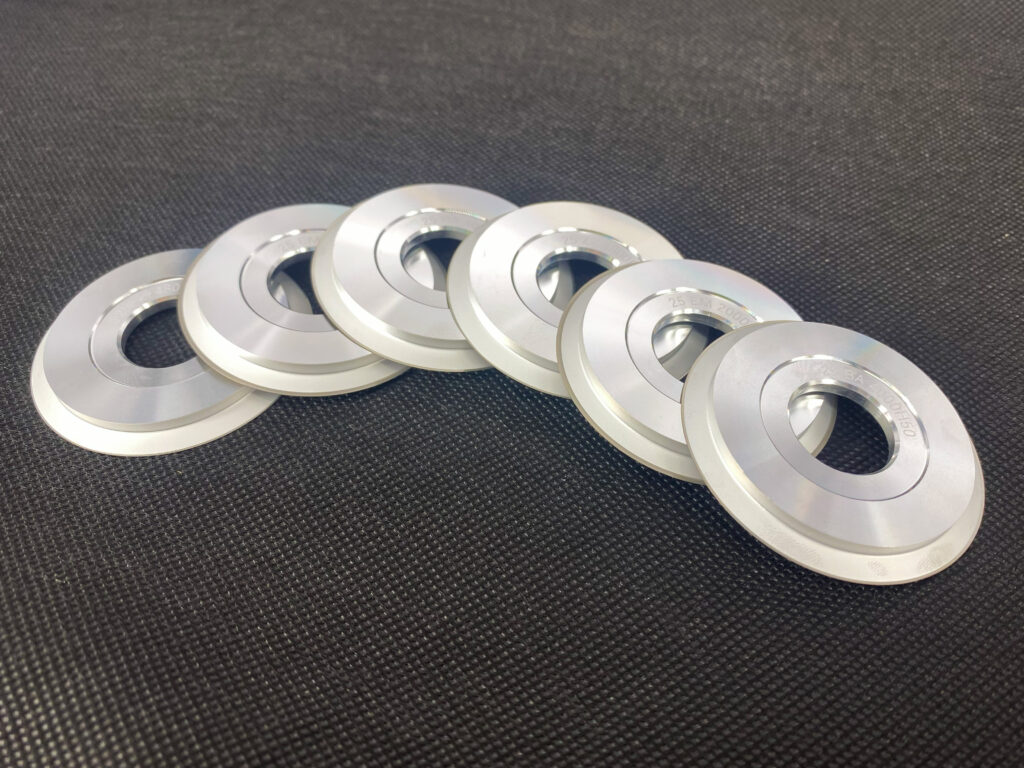
To meet the high-precision and high-stability cutting demands for various hard and brittle materials in semiconductor assembly, testing, and backend packaging, Honway offers multiple professional dicing blade products, corresponding to different materials and application scenarios to ensure processing quality and process efficiency:
- Wafer Electroplated Dicing Blade
Suitable for silicon wafers, oxide wafers, and compound wafers such as SiC, GaAs, and GaP. It features an ultra-small kerf and high machining precision, effectively reducing cutting loss and improving die quality. It is widely used in wafer dicing and precision component processes. - Wafer Packaging Dicing Blade – Hard Blade
Made of a high-wear-resistant material with a stable blade structure, it can effectively control chip sidewall steps and dimensional accuracy. It is suitable for hard and brittle materials such as ceramic LED substrates, semiconductor packaging substrates, PZT, and TGG, serving as a stable and powerful tool for high-yield packaging processes. - 晶圓封裝划片刀-軟刀Wafer Packaging Dicing Blade – Soft Blade
With the dual advantages of high cutting speed (up to 200mm/s) and long lifespan (over 7000m), it is particularly suitable for high-efficiency mass production needs for materials such as PCBs, EMC, Chip LED substrates, and LTCC, PZT, and TGG, improving cutting efficiency and production stability.
Act now, and let’s together open a new chapter in semiconductor precision manufacturing!
- Free Consultation and Project Evaluation: Our Honway diamond industrial consumable experts provide product consultation and professional evaluation tailored to your specific process needs, working together to find the optimal grinding and polishing solution.
- Customized Solution Design: Whether you are facing challenges with silicon wafers or compound semiconductors (SiC, GaN, GaAs), we can customize the most suitable semiconductor grinding and polishing solutions for your needs.
- Advanced Materials and Performance Verification: We offer industry-leading Honway diamond polishing liquids, diamond disks, precision grinding wheels, and other consumables. We can also assist you with process implementation and performance verification to ensure your products achieve the expected high yield and excellent performance.
- Honway possesses stable supply capabilities, quality assurance, after-sales service, and customized support, ensuring the most consistent product quality for you.
Don’t let processing challenges limit your innovation! Contact us now, and let Honway’s diamond industrial consumables be your key to success!
More Information on Honway Diamond Grinding and Polishing Consumables:
To learn more about how Honway can bring breakthrough benefits to your semiconductor processes, please click the links below to explore our full range of diamond grinding and polishing consumables and technical details:
- Honway Nanodiamond Polishing Liquid Series
- Honway Precision Wafer Grinding and Polishing Pads
- Honway Grinding Wheels for Wafer Surface Grinding
- Honway Chamfering and Grinding Wheels for Silicon Wafers
- Honway Wafer Electroplated Dicing Blade
- Honway Wafer Packaging Dicing Blade – Soft Blade
- Honway Wafer Packaging Dicing Blade – Hard Blade
You can also directly “contact our Honway expert team,” and we will provide the most professional customized consultation and solutions.
Read More Related Topics
- Diamond Substrate>>>From jewelry to semiconductors: Diamonds play a key role in the next generation of thermal conductivity materials
- Compound Semiconductors>>>The secret weapon of semiconductor precision manufacturing: diamond grinding and polishing consumables, effectively improving wafer yield and performance!
- Semiconductor grinding and polishing>>>Grinding and Polishing in Semiconductor Manufacturing: Excellence from Material Selection to Consumable Empowerment
We offer customized adjustments to the grinding process, tailored to meet processing requirements for maximum efficiency.
After reading the content, if you still don’t know how to select the most suitable option,
Feel free to contact us and we will have specialist available to answer your questions.
If you need customized quotations, you’re also welcome to contact us.
Customer Service Hours: Monday to Friday 09:00~18:00 (GMT+8)
Phone: +8867 223 1058
If you have a subject that you want to know or a phone call that is not clear, you are welcome to send a private message to Facebook~~
Honway Facebook: https://www.facebook.com/honwaygroup
You may be interested in…
[wpb-random-posts]

